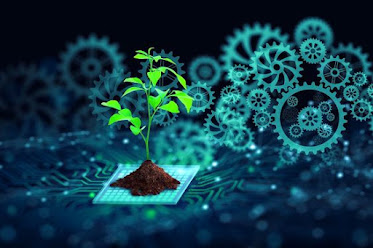Algorithms: Algorithms are step-by-step procedures or processes used to solve problems or perform computations. They are fundamental to computer science and play a crucial role in developing efficient software solutions.
Programming Languages: Programming languages are used to write instructions or code that computers can understand and execute. Examples include Python, Java, C++, and JavaScript. Different programming languages have different syntax and are suited for different purposes.
Data Structures: Data structures refer to the organization and management of data in computer systems. Common data structures include arrays, linked lists, stacks, queues, trees, and graphs. Choosing the appropriate data structure can greatly impact the efficiency of algorithms and program performance.
Artificial Intelligence (AI): AI is concerned with creating intelligent machines that can perform tasks that typically require human intelligence, such as understanding natural language, recognizing patterns, learning from experience, and making decisions. It encompasses subfields like machine learning, natural language processing, computer vision, and robotics.
Computer Architecture: Computer architecture focuses on the design and organization of computer systems, including processors, memory, input/output devices, and networking. It deals with hardware components and their interactions to create efficient and reliable computing systems.
Software Engineering: Software engineering is the discipline of developing and maintaining high-quality software systems. It involves processes such as requirements analysis, system design, software development, testing, deployment, and maintenance. Software engineers follow methodologies and best practices to ensure the efficient and reliable creation of software applications.
Operating Systems: An operating system is software that manages computer hardware and software resources, providing services to other software applications. It controls the execution of programs, manages memory, handles input/output operations, and provides user interfaces. Popular operating systems include Windows, macOS, Linux, and Android.
Databases: Databases are used to store, manage, and retrieve structured collections of data. They provide efficient ways to organize and access data for various applications. Relational databases, such as MySQL and PostgreSQL, and NoSQL databases, like MongoDB and Cassandra, are widely used in computer science.
Networking and Security: Networking involves the design, implementation, and management of computer networks, enabling communication and data transfer between devices. Network security focuses on protecting networks and systems from unauthorized access, data breaches, and other threats.
Human-Computer Interaction (HCI): HCI examines the design and interaction between humans and computers. It aims to create user-friendly and intuitive interfaces, studying aspects such as usability, accessibility, user experience (UX), and user interface (UI) design.
Computer Graphics: Computer graphics involves the creation, manipulation, and rendering of visual content using computers. It encompasses areas such as 2D and 3D graphics, rendering techniques, animation, virtual reality (VR), and computer-aided design (CAD).
Computer Networks: Computer networks focus on the design, implementation, and management of communication systems that enable computers and other devices to exchange data and resources. It covers topics like network protocols, routing, network security, and network performance optimization.
Distributed Systems: Distributed systems deal with the design and development of computer systems that consist of multiple interconnected devices or nodes. It involves addressing challenges related to communication, synchronization, fault tolerance, and scalability in distributed environments.
Data Science: Data science combines computer science with statistical analysis and domain knowledge to extract insights and knowledge from large and complex datasets. It involves techniques like data mining, machine learning, data visualization, and statistical modeling.
Cryptography and Security: Cryptography focuses on secure communication and data protection by using mathematical algorithms and techniques. It includes encryption, decryption, digital signatures, secure protocols, and cryptographic key management. Security involves protecting computer systems, networks, and data from unauthorized access, attacks, and vulnerabilities.
Computer Vision: Computer vision deals with enabling computers to extract information and understand the visual content of images and videos. It includes image recognition, object detection, image segmentation, and scene understanding.
Natural Language Processing (NLP): NLP focuses on the interaction between computers and human language. It involves tasks such as speech recognition, text analysis, language translation, sentiment analysis, and chatbot development.
Software Development Methodologies: Software development methodologies provide frameworks and guidelines for managing the process of creating software. Examples include agile methodologies (Scrum, Kanban), waterfall model, and DevOps, which emphasize iterative development, collaboration, and continuous delivery.
Computer Education and Ethics: Computer science education involves teaching and learning computer science concepts, programming skills, and computational thinking at various educational levels. Computer ethics explores the ethical considerations and societal impacts of computer systems and technology.
Quantum Computing: Quantum computing is an emerging field that explores the development of computers based on principles of quantum mechanics. It aims to harness quantum phenomena to perform computations that are significantly faster or more efficient than classical computers.













.jpg)

.png)
.jpg)

.jpg)





